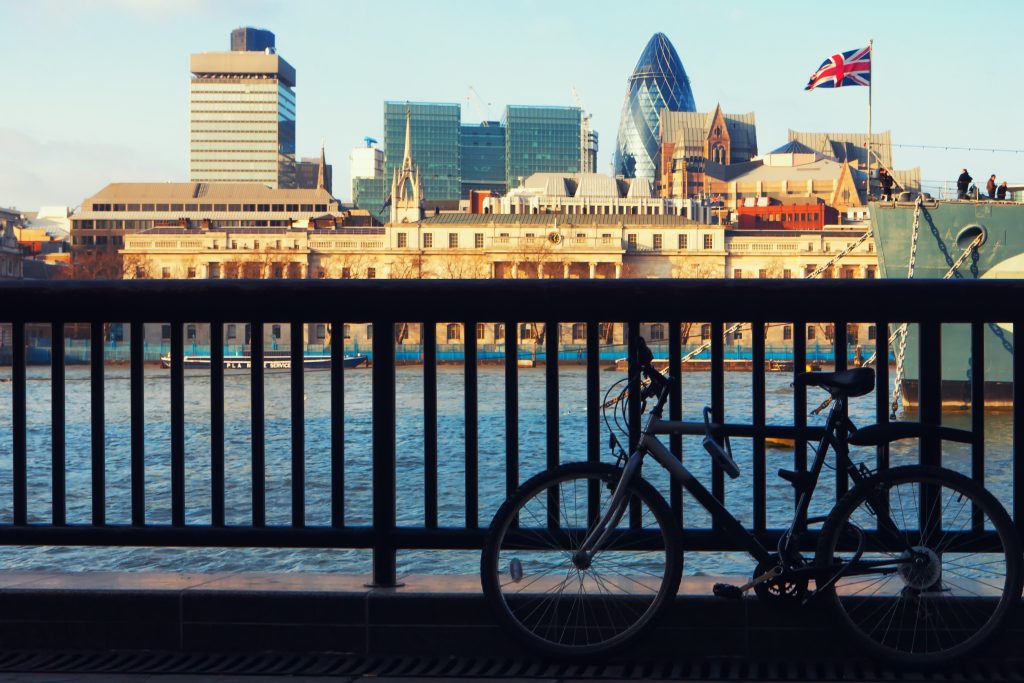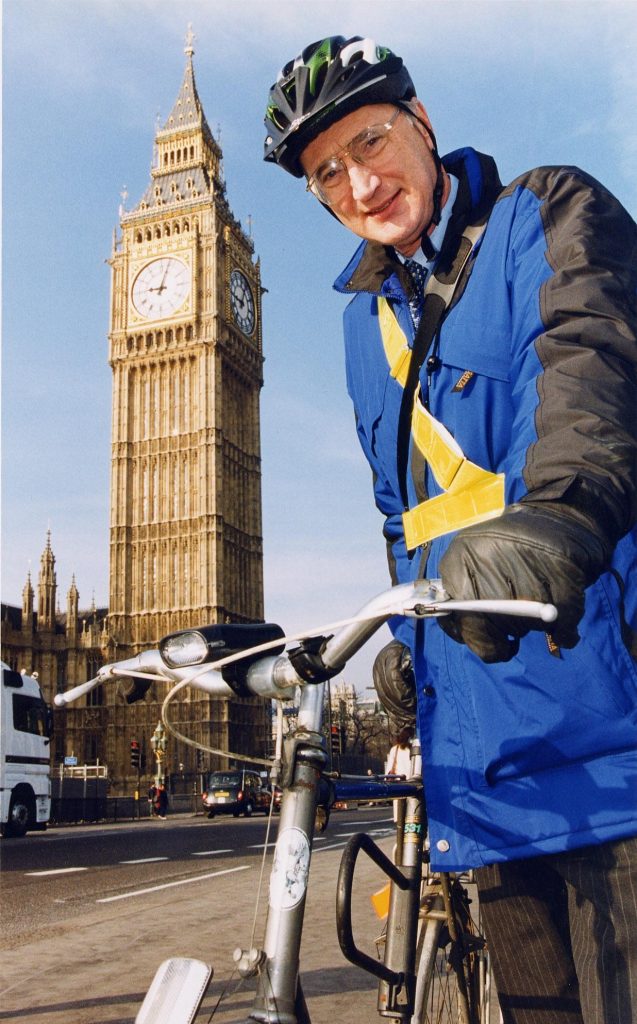One Friday afternoon in 1975, Sir George Young made an impassioned speech to the House of Commons around the imperative need to improve active travel facilities for city dwellers.
That year, cars, buses and taxis equated to around 330 billion passenger kilometres travelled, and the total number of private vehicle ownership was soaring. US scientist, Wallace Broecker, had just publicly presented the term: “global warming” to the public, after publishing a scientific paper around the subject.
Lord Young Cookham, formerly Sir George Young, a newly elected MP for Acton, stated: “I can think of no better time to initiate a debate on improved facilities for the cyclist than at 4 o’clock on a Friday afternoon as London’s traffic congeals into an immovable mass, and no better place than this Chamber, a stone’s throw from Parliament Square, where the traffic congestion was once so bad that a British Prime Minister was forced to telephone across the world to complain to the leader of the Greater London Council about it. And as you, Mr. Deputy Speaker, inch your car into the traffic in Parliament Square at 4.35 p.m. you might well ask yourself whether some of your fellow drivers might not with advantage to themselves as well as advantage to yourself travel on two wheels instead of four.”

Young touched upon Stevenage’s 40km cycling network, which was constructed around 1955, with designer Claxton embracing the vision of a cleaner transport network. However, the parliamentary debate later foresaw that a newly constructed town would have easier potential for a cycling network, over a historical city like London, that had grown around the manufacturing of motor vehicles, post-war.
“As an example of the potential if adequate provision is made, in Stevenage where a grade-separated system of bicycle routes has been constructed between one-third and one-half of all journeys are made by bicycle. Therefore, the potential exists and is a prize worth grasping.”
Young made some innovative arguments for the promotion of cycling, calculating exactly how active travel could tackle the climate crisis.
“With the measures that I have outlined, the potential can be achieved, and some of the rusty 13 million bicycles and some of the equally rusty 18 million cyclists can play their part in tackling the economic crisis and improving the environment in our towns and country. We all look to the Government to give a lead.”
Young’s peers were congratulatory at his speech, noting that young people were conscious of cycling being a more economic form of transport, and cited the alternative mobility system that the bike plus the train offered.

Lord Young went on to serve under Prime Minister, John Major, before becoming transport secretary, between 1995-97. During his career, he has been nicknamed the “bicycling baronet,” due to his lengthy daily cycle ride to Westminster.
Present day, Lord Young of Cookham, our very own Sir George Young, now serves as the Deputy Speaker for the House of Lords and looks back fondly at the debate.
“We as a society have made much progress since I stood up all those years ago and laid out what we desperately needed in terms of cycling provisions – particularly with the much-needed implementation of cycle lanes in major cities and improved parking at railway stations. But we have further to go in making it safer to cycle to school, and to encourage all cyclists to observe the highway code.”
This year, Labour’s Transport secretary stated that government would invest unprecedented levels of funding into active travel, as plan to lower demand on the NHS, and improve health and inequality.
Almost 50 years ago, the impassioned Young stated: “In 50 years, there may be another debate on cycling, and I may not be on the speakers’ list, but I hope that we continue to make the sort of progress we have made over the last 50 years.”
Are you ready to start your active travel journey?
Pop into one our stores, or visit: www.highwaycycles.co.uk
